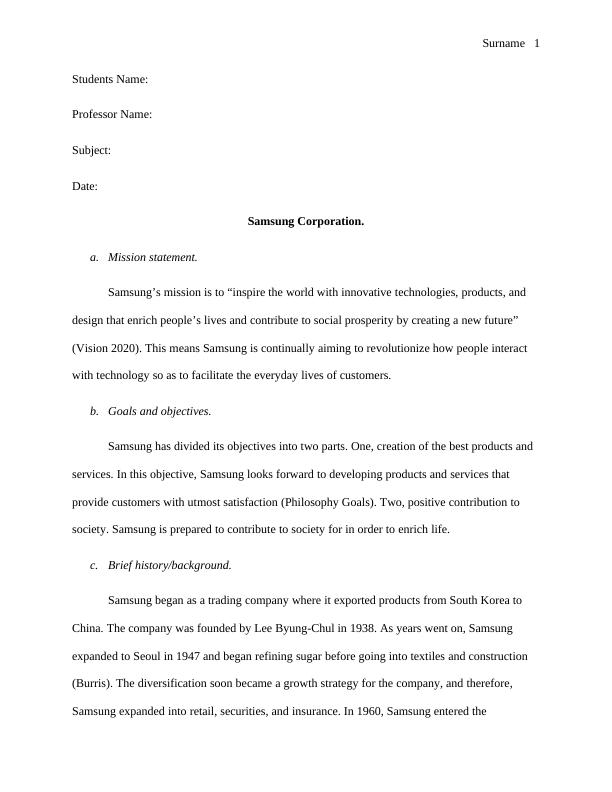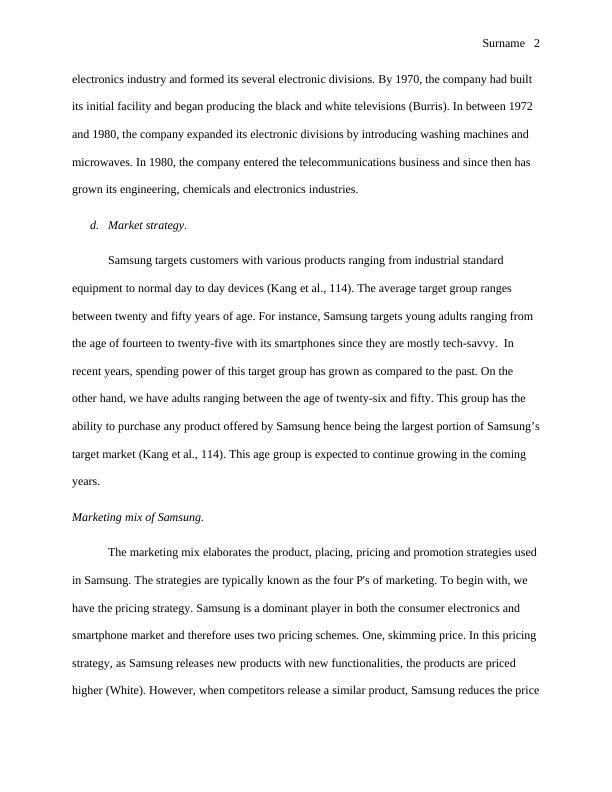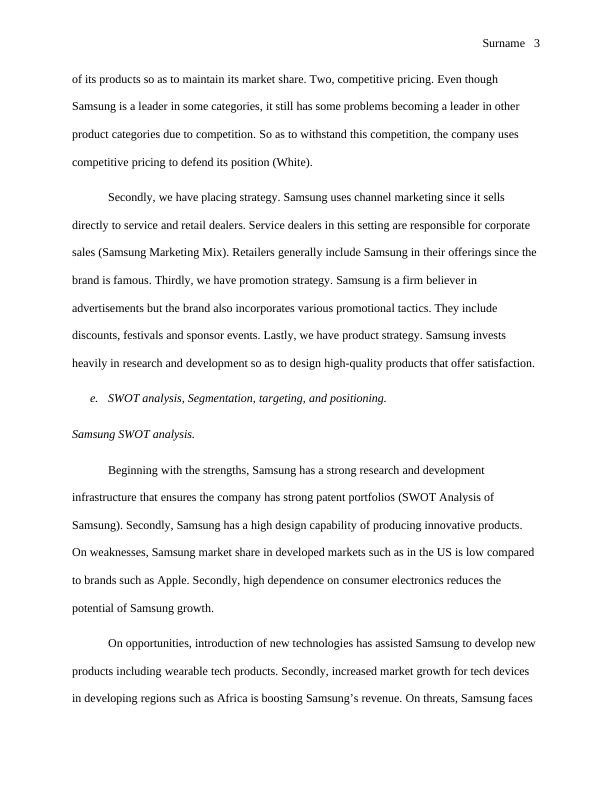Samsung Corporation: Mission, Goals, History, Market Strategy, and Marketing Mix
6 Pages1412 Words78 Views
Added on 2023-01-12
About This Document
This document provides an overview of Samsung Corporation, including its mission statement, goals and objectives, brief history, market strategy, and marketing mix. It also includes a SWOT analysis, segmentation, targeting, and positioning strategies used by Samsung. The document concludes by highlighting Samsung's competitive advantage and its investment in research and development.
Samsung Corporation: Mission, Goals, History, Market Strategy, and Marketing Mix
Added on 2023-01-12
ShareRelated Documents
End of preview
Want to access all the pages? Upload your documents or become a member.
Marketing Plan & Analysis (pdf)
|13
|3481
|354
Samsung Electronics co ltd Marketing Strategy Assignment
|16
|3722
|80
Marketing and Branding of Samsung
|13
|1925
|125
Integrated Marketing Communication for Samsung
|8
|1579
|274
Individual Marketing Portfolio - Apple
|12
|2671
|66
Market Growth in Foreign Countries: A Case of Samsung Group
|10
|2883
|546



